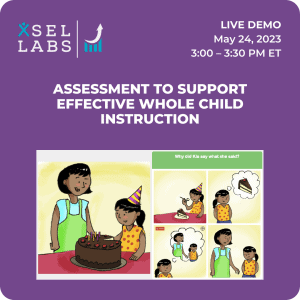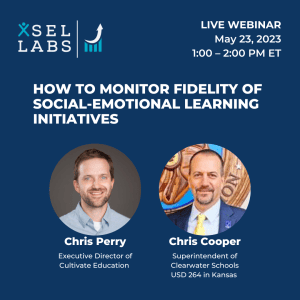The Case for Assessing School Climate and Social-Emotional Competence
In a prior blog post—Social and Emotional Competence and the Conditions for Learning—I discussed a tension between those who advocate assessing school climate exclusively and those who advocate assessing student social and emotional competence. I made the case that zero-sum thinking about whether to assess school climate or social and emotional competence is misguided. I argued that in the best of all worlds, educators would assess both climate and competence and use what they learn to guide actions to create positive conditions for learning and data-informed social and emotional competence instruction.
By the way, colleagues at American Institutes for Research (AIR) wrote a terrific brief on the topic: School Climate and Social and Emotional Learning: The Integration of Two Approaches.
Combining School Climate and Social-Emotional Competence Assessment
My thinking about this issue has evolved. When we first got started, our team focused exclusively on developing evidence-based social and emotional competence assessments. Why did we start there? In the same way that a reading assessment can help guide reading instruction, we felt that social and emotional assessment should directly measure competence to guide effective social and emotional learning (SEL) instruction, and existing assessments were unable to do that.
But in our conversations with colleagues, we came to understand that many in the field were calling for a focus on the conditions of learning, or school climate. And we agree that the conditions for learning are important, and that school climate is important to assess. But we did not abandon competence assessment. Instead, we decided to incorporate climate measures into our assessment offerings so that our education partners have the information they need to guide SEL skill instruction and create positive learning conditions.
The Evidence Supports Assessing Climate and Social-Emotional Competence
We turned to data to decide how best to assess school climate, starting with the existing research. We reasoned that it makes the most sense to measure climate and competence together if they are related—if, say, a positive climate supports the development of competencies.
We found that the research literature indicated that conditions for learning, such as students’ perceptions of safety, sense of belonging, and instructional support, are associated with social, emotional, and behavioral outcomes. So far, so good.
But what about the relationship between school climate and social and emotional competencies? Is climate associated with how well students solve social problems, manage their emotions, and understand others’ thoughts and feelings?
A 2023 meta-analysis of universal school-based SEL interventions found that SEL interventions had a significant effect on school climate and safety. In addition, we analyzed data from more than 1,600 students in kindergarten through sixth grade who completed our SEL competence assessment and brief climate survey. For both younger children (K to 3rd grade) and older children (4th to 6th grade), the more positively students rated school climate in the fall, the more students’ social-emotional competence grew from fall to spring. This is consistent with the conclusion that more positive climates produce more competent students.
In short, evidence—from the literature and our own data—supports the complementarity of climate and social and emotional competence assessment.
A Simple Tool for Assessing School Climate and Social and Emotional Competence Together
With consistent evidence to support our position that social and emotional competence and climate assessments complement one another, we rolled out a brief climate survey during the 2020-2021 school year. This six-item survey includes key questions about students’ sense of safety, belonging, and instructional support. Schools and districts can co-administer this climate survey with our social-emotional competence assessment to save time for students and educators. Our goals were to make it easy for our district partners to:
- Assess school climate and social and emotional competence together,
- Obtain useful climate reports alongside social-emotional competence reports, and
- Use these complementary kinds of data to create the most positive climate possible and teach the competencies that matter most.
We made it easy for our partners to get useful reports by integrating simple summary charts into our existing reporting platform. Our partners use this information to decide what the community of adults in each school can do to improve the climate.
We notice that our partners who assess both social and emotional competence and school climate engage in discussions about SEL that balance a focus on what skills to teach to whom with a focus on how to create the safest, most welcoming, and supportive learning environments they can.
And that, in our view, is the best of all worlds.



